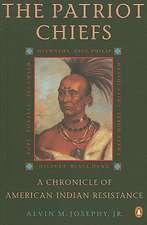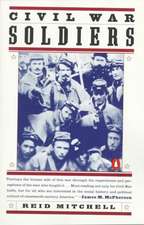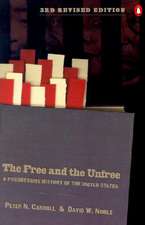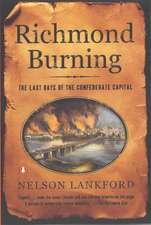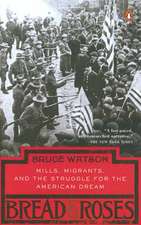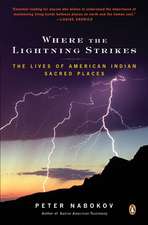Hellhound on His Trail: The Stalking of Martin Luther King, Jr. and the International Hunt for His Assassin
Autor Hampton Sidesen Limba Engleză Hardback – 31 mar 2010
Vezi toate premiile Carte premiată
Edgar Allan Poe Awards (2011)
Edgar Award Nominee
One of the Best Books of the Year: O, The Oprah Magazine, Time, The Washington Post, The Christian Science Monitor, St. Louis Post-Dispatch, San Francisco Chronicle
From the acclaimed bestselling author of Ghost Soldiers and Blood and Thunder, a taut, intense narrative about the assassination of Martin Luther King, Jr., and the largest manhunt in American history.
On April 23, 1967, Prisoner #416J, an inmate at the notorious Missouri State Penitentiary, escaped in a breadbox. Fashioning himself Eric Galt, this nondescript thief and con man—whose real name was James Earl Ray—drifted through the South, into Mexico, and then Los Angeles, where he was galvanized by George Wallace’s racist presidential campaign.
On February 1, 1968, two Memphis garbage men were crushed to death in their hydraulic truck, provoking the exclusively African American workforce to go on strike. Hoping to resuscitate his faltering crusade, King joined the sanitation workers’ cause, but their march down Beale Street, the historic avenue of the blues, turned violent. Humiliated, King fatefully vowed to return to Memphis in April.
With relentless storytelling drive, Sides follows Galt and King as they crisscross the country, one stalking the other, until the crushing moment at the Lorraine Motel when the drifter catches up with his prey. Against the backdrop of the resulting nationwide riots and the pathos of King’s funeral, Sides gives us a riveting cross-cut narrative of the assassin’s flight and the sixty-five-day search that led investigators to Canada, Portugal, and England—a massive manhunt ironically led by Hoover’s FBI.
Magnificent in scope, drawing on a wealth of previously unpublished material, this nonfiction thriller illuminates one of the darkest hours in American life—an example of how history is so often a matter of the petty bringing down the great.
| Toate formatele și edițiile | Preț | Express |
|---|---|---|
| Paperback (2) | 70.49 lei 23-34 zile | +27.12 lei 7-13 zile |
| Penguin Books – 4 mai 2011 | 70.49 lei 23-34 zile | +27.12 lei 7-13 zile |
| Anchor Books – 28 feb 2011 | 102.70 lei 3-5 săpt. |
Preț: 171.96 lei
Nou
Puncte Express: 258
Preț estimativ în valută:
32.90€ • 35.85$ • 27.73£
32.90€ • 35.85$ • 27.73£
Carte indisponibilă temporar
Doresc să fiu notificat când acest titlu va fi disponibil:
Se trimite...
Preluare comenzi: 021 569.72.76
Specificații
ISBN-13: 9780385523929
ISBN-10: 0385523920
Pagini: 480
Ilustrații: 8-PAGE INSERT OF B&W PHOTOS
Dimensiuni: 165 x 236 x 31 mm
Greutate: 0.76 kg
Ediția:New.
Editura: Doubleday Books
ISBN-10: 0385523920
Pagini: 480
Ilustrații: 8-PAGE INSERT OF B&W PHOTOS
Dimensiuni: 165 x 236 x 31 mm
Greutate: 0.76 kg
Ediția:New.
Editura: Doubleday Books
Notă biografică
A native of Memphis, HAMPTON SIDES is an award-winning editor of Outside and the author of the bestselling histories Blood and Thunder and Ghost Soldiers.
Extras
Chapter 1
City of White Gold
In early May 1967, three hundred miles downstream from St. Louis, the citizens of Memphis stood along the cobblestoned banks, enjoying the musky coolness of the river. Seventy-five thousand people, dressed to be seen, waited in the twilight. They’d come from all the secret krewes —from the Mystic Society of the Memphi, from Osiris and RaMet and Sphinx. They’d come from all the clubs—Chickasaw, University, Colonial, Hunt and Polo, the Memphis Country Club—and from the garden societies. The good families, the old families, in their finest James Davis clothes, bourbon flasks in hand, assembled for the start of the South’s Greatest Party.
The brown Mississippi, wide with northern snowmelt, was a confusion of crosscurrents and boils. In the main channel, whole trees could be seen shooting downstream. A mile across the river lay the floodplain of Arkansas, a world of chiggers and alligator gars and water moccasins that lived in swampy oxbow lakes. On the long sandbars, feral pigs ran among graveyards of driftwood and rotten cypress stumps.
But in the clearings beyond these wild margins were hundreds and hundreds of miles of cotton fields. Cotton as far as the eye could see, row after perfect row. Gossypium hirsutum. White gold, mined from the world’s richest alluvium.
Memphis was built on the spot where the Spanish explorer Hernando de Soto, in 1541, became the first European to lay eyes on the Mississippi River. The city was founded 278 years later by Andrew Jackson and a group of his investor cronies, and named for the ancient Egyptian capital near the Giza pyramids. Memphis didn’t really take off, however, until the dense hardwood forests along the river began to be cleared in the mid-nineteenth century, finally making farmable the flat, rich floodplain known as the Mississippi Delta. As the country slid toward Civil War, Memphis became the capital of a region that was constructing a last frenzied iteration of Southern planter society. If the Delta came late to cotton, it came to it with a vengeance, and with all the defiant desperation of someone following a wounded creed.
Cotton had grown along the Nile near the original Memphis, and cotton was what modern Memphis had come to celebrate on this fine humid evening of May 10, 1967. In the fields of Arkansas, and down in nearby Mississippi, the little darlings had already begun to push through the dirt, the crop dusters were preparing to rain down their chemicals, and the old true cycle was in the offing. Now it was time for Memphians to pay homage and to bless another season in cotton’s splendid realm.
The thirty-third annual Cotton Carnival, Memphis’s answer to Mardi Gras, was about to begin. Later in the week, there would be luncheons, trade shows, and charity balls. A beauty contest would declare the fairest Maid of Cotton. Many thousands would visit the giant midway and attend parades with elaborate floats, some of them spun from cotton, depicting the gone-but-not-forgotten Old South and the treachery of the long-snouted boll weevil. All week there would be parties on the rooftop of the Peabody Hotel, where mallard ducks lived in a scaled-down mansion when they weren’t marching down a red carpet to splash around in the lobby fountain.
Tonight was the high pageant that kicked off the whole week—the majestic arrival of the King and Queen, sitting upon their thrones with their sequined court all around them, on a great glittery barge that was scheduled to nudge into the Memphis harbor shortly after sunset. It was a celebration not only of cotton but also of the peculiarly settled life that thrived on it—the life of dove hunts and pig roasts and debutante balls, the genteel agrarian world that could still be found in the fertile realms surrounding Memphis.
Cotton, cotton everywhere. Crane operators, hoisting dozens of five- hundred-pound cotton bales, had constructed colossal arches that spanned the downtown streets. All attendees were urged to wear cotton, and they did: party girls in crinoline dresses, dandies in seersucker suits, children in starched oxford cloth. People even ate cotton candy while they waited with the crowds for the Royal Barge to arrive.
Representatives from all echelons of the Delta cotton world had joined the masses on the river—the factors, the classers, the ginners, the brokers, the seed sellers, the plantation owners, the compress owners,
the board members of the Cotton Exchange, the loan officers from the Union Planters Bank, the chemical engineers who’d learned how to tease out the plant’s oils and secret compounds for every industrial purpose Mammon could devise.
Cotton’s presence, and cotton’s past, could be felt everywhere along the shadowed waterfront. Behind the cheering crowds, high on the magnolia-lined bluff once occupied by Chickasaw Indians, sat Confederate Park, with its bronze statue of Jefferson Davis, who’d made his home in Memphis after the Civil War. A block from the park was the place on Adams Avenue where Nathan Bedford Forrest once operated a giant slave market, said to be the South’s largest, that boasted “the best selected assortment of field hands, house servants, and mechanics . . . with fresh supplies of likely Young Negroes.”
Running lengthwise along the same bluff lay Front Street, cotton’s main drag. In the upstairs classing rooms, sharp-eyed savants still graded cotton samples by pure intuition under north-facing skylights— judging according to quaint industry distinctions like “strict low middling” or “strict good ordinary.” Memphis remained one of the largest cotton markets in the world, with massive fortunes made and lost and made again. Many of the names were legends—Dunavant, Cook, Turley, Hohenberg, Allenberg—high rollers in a vaguely druidic enterprise. In October, during harvest time, the skies above Front Street still swirled with snows of lint.
Cotton cotton cotton. Memphis couldn’t get enough of it. Cotton was still king. It would always be king.
n
In truth, though no one wanted to talk about it on that roistering night in 1967, the old world of Delta cotton was in serious trouble. Life on the plantations had changed so fast it was hardly recognizable. Soybeans had made inroads as the new mono-crop of choice. Polyester had encroached upon the American wardrobe. Massive mechanized cotton pickers, along with new soups of pesticides and herbicides, had rendered largely obsolete the life of the Delta sharecropper. Thus demoted by petrochemicals and machines, many thousands of black field hands and their families steadily left the plantations over the decades and came to Memphis—the nearest city, and the only American city of any size named after an African capital.
Other than mule skinning or chopping cotton, though, most Delta field hands had little in the way of marketable skills when they came to the city. Some found success playing the blues on Beale Street—the central thoroughfare of black Memphis. But most settled into low-end jobs that merely recapitulated the racial and socioeconomic hierarchy they’d known on the plantations. Many became maids, janitors, waiters, yardmen, cooks, stevedores. Some had no choice but to take the lowest- end job of all: they reported to the Public Works Department and became garbagemen.
At least they’d come to a city with a history that was rich and gothic and weird. Memphis, this city of 600,000 people wedged in the southwestern crotch of Tennessee, had always had a touch of madness but also a prodigious and sometimes profane sense of humor. It was a town known for its outlandish characters and half-demented geniuses: wrestlers, riverboat captains, inventors, gamblers, snake-oil salesmen, musicians high on some peculiar native vibe that could be felt but whose existence could not be proved. For 150 years, all the pain and pathos of the river seemed to wash up on the cobblestoned banks. In 1878, the city was nearly completely destroyed by a yellow fever epidemic, but the Metropolis of the American Nile had recovered, madder and stranger and more full of brawling ambition than ever. Memphis, as one writer famously put it, “was built on a bluff and run on the same principle.”
It was a city that, since its very inception, had been perched on the racial fault line. The first mayor, Marcus Brutus Winchester, created a major scandal by falling for, and eventually marrying, a “woman of color.” One of the area’s most fascinating citizens in the late 1820s, a Scottish-born utopian named Fanny Wright, created an experimental commune of slaves whom she sought to educate and bring into full citizenship. Several generations later, Memphis gave the world Ida B. Wells, an early titan of the civil rights movement, a woman of profound courage who, in the 1890s, repeatedly risked assassination with eloquent protests against lynching. Then there was the ever- cryptic Mr. Forrest, who quit his slave mart and took up a sword in the Civil War, becoming one of the most wickedly brilliant generals in American history. After the war he returned to Memphis, where, after briefly serving as the first Grand Wizard of the Ku Klux Klan, he apparently experienced an epiphany—renouncing the Klan with seeming genuineness and calling for racial reconciliation shortly before his death.
But music was the city’s greatest gift and particular genius: the blues of W. C. Handy’s Beale Street, the soul of Stax Records, and a certain interracial sound stew that a redneck wizard named Sam Phillips cooked up in a tiny studio on Union Avenue, less than a hundred yards from where Forrest lay buried. At its essence, the music of Memphis was about the fecund intermingling of black and white. Elvis Presley, coaxed and prodded by Phillips, found a way to transmute the raw sound of Beale Street into something that would resonate across the world. The stars, white and black, who had passed through the studios and nightclubs of Memphis were as numerous as they were legendary: not just Elvis, but Rufus Thomas, Johnny Cash, B. B. King, Albert King, Carl Perkins, Ike Turner, Jerry Lee Lewis, Carla Thomas, Isaac Hayes, Roy Orbison, Muddy Waters, Howlin’ Wolf, Otis Redding, John Lee Hooker, Memphis Minnie, Memphis Slim. The phantom- like Robert Johnson, perhaps the greatest of the Delta bluesmen, lived in and around Memphis much of his short, tragic life. It could be argued that over the decades, Memphis’s musical ferment had done more to integrate the country than a hundred pieces of legislation.
In a way, cotton was at the center of the ferment, for cotton had spawned the blues, and cotton had built the city that gave the blues its first wider expression. But there was no mistaking the fact that most black folks in Memphis were good and done with cotton, and they hated most everything about the hairy prickly shrub that had so long enslaved them. Certainly not many black people were to be found on the banks of the river on that May night in 1967, awaiting the arrival of the Royal Barge.
n
The skies over Arkansas ripened to a final brilliant red before closing into darkness. It seemed as though the sun had literally buried itself in cotton fields. An orchestra played strains of Vivaldi, and the heavens crackled with fireworks.
Then, from under the bridge, the dazzling vessel slipped into view, with the crowds gasping in wonder. At first it was just a burst of bright light, a diaphanous vision floating out on the currents. As it drew nearer to the harbor, the ravishing details began to emerge. The barge was the size of a football field, with a giant art deco cotton boll rising over the sparkling set. Egyptian motifs were woven into the decorations—pyramids, sphinxes, hieroglyphics: the Old South meets the land of the pharaohs.
Seated on their thrones high up in the towering boll were King Joseph and Queen Blanche, 1967’s monarchs, wearing their crowns, holding their scepters. As always, they’d been chosen in secret, by some obscure protocol known only to the Mystic Society of the Memphi. As always, he was an older man, a business potentate, while she was a nubile paragon of Southern pulchritude, college aged and presumably a virgin. They were blindingly white people, in blindingly white clothes, sitting high in their resplendent perch. In unison, they cupped their gloved hands and gave the crowds tiny swiveling waves, as if to say, Here we are! . . . There you are! . . . We’re all here!
More than a hundred people made up the royal court, all posed together on the barge like the largest wedding party ever assembled. There were the duchesses, the counts, the pages, the princesses and their tuxedoed escorts. There were the young girls, who curtsied with labored formality and attended the train of Her Majesty’s gown. There were the weevils, the masked green jesters whose identities were unknown. On one side of the Royal Barge stood the Ladies of the Realm— belles from plantation towns all over the Mississippi Delta. On the other side were the Ladies-in-Waiting—belles from the city, from good families, and of marriageable age.
The court moved about the barge in a carefully choreographed promenade. Everyone was smiling, bowing, waving, beaming. “Don’t get wise with me,” the king warned, “or I’ll have you all beheaded.” When the music reached a fever pitch, King Joseph and Queen Blanche rose and took a bow. All along the bluff, the seventy-five thousand loyal subjects erupted in thunderous cheers: Hail, King Cotton and His Queen!
Then, in a swirl of lights, the court began to parade off the stage, and off the barge, and onto the old cobblestones, the royals closely gaurded by uniformed young men dressed as Confederate colonels. Like Peabody ducks, the revelers strutted down a long red carpet to a waiting convoy of Cadillac convertibles and were whisked away to the first parties of the season.
City of White Gold
In early May 1967, three hundred miles downstream from St. Louis, the citizens of Memphis stood along the cobblestoned banks, enjoying the musky coolness of the river. Seventy-five thousand people, dressed to be seen, waited in the twilight. They’d come from all the secret krewes —from the Mystic Society of the Memphi, from Osiris and RaMet and Sphinx. They’d come from all the clubs—Chickasaw, University, Colonial, Hunt and Polo, the Memphis Country Club—and from the garden societies. The good families, the old families, in their finest James Davis clothes, bourbon flasks in hand, assembled for the start of the South’s Greatest Party.
The brown Mississippi, wide with northern snowmelt, was a confusion of crosscurrents and boils. In the main channel, whole trees could be seen shooting downstream. A mile across the river lay the floodplain of Arkansas, a world of chiggers and alligator gars and water moccasins that lived in swampy oxbow lakes. On the long sandbars, feral pigs ran among graveyards of driftwood and rotten cypress stumps.
But in the clearings beyond these wild margins were hundreds and hundreds of miles of cotton fields. Cotton as far as the eye could see, row after perfect row. Gossypium hirsutum. White gold, mined from the world’s richest alluvium.
Memphis was built on the spot where the Spanish explorer Hernando de Soto, in 1541, became the first European to lay eyes on the Mississippi River. The city was founded 278 years later by Andrew Jackson and a group of his investor cronies, and named for the ancient Egyptian capital near the Giza pyramids. Memphis didn’t really take off, however, until the dense hardwood forests along the river began to be cleared in the mid-nineteenth century, finally making farmable the flat, rich floodplain known as the Mississippi Delta. As the country slid toward Civil War, Memphis became the capital of a region that was constructing a last frenzied iteration of Southern planter society. If the Delta came late to cotton, it came to it with a vengeance, and with all the defiant desperation of someone following a wounded creed.
Cotton had grown along the Nile near the original Memphis, and cotton was what modern Memphis had come to celebrate on this fine humid evening of May 10, 1967. In the fields of Arkansas, and down in nearby Mississippi, the little darlings had already begun to push through the dirt, the crop dusters were preparing to rain down their chemicals, and the old true cycle was in the offing. Now it was time for Memphians to pay homage and to bless another season in cotton’s splendid realm.
The thirty-third annual Cotton Carnival, Memphis’s answer to Mardi Gras, was about to begin. Later in the week, there would be luncheons, trade shows, and charity balls. A beauty contest would declare the fairest Maid of Cotton. Many thousands would visit the giant midway and attend parades with elaborate floats, some of them spun from cotton, depicting the gone-but-not-forgotten Old South and the treachery of the long-snouted boll weevil. All week there would be parties on the rooftop of the Peabody Hotel, where mallard ducks lived in a scaled-down mansion when they weren’t marching down a red carpet to splash around in the lobby fountain.
Tonight was the high pageant that kicked off the whole week—the majestic arrival of the King and Queen, sitting upon their thrones with their sequined court all around them, on a great glittery barge that was scheduled to nudge into the Memphis harbor shortly after sunset. It was a celebration not only of cotton but also of the peculiarly settled life that thrived on it—the life of dove hunts and pig roasts and debutante balls, the genteel agrarian world that could still be found in the fertile realms surrounding Memphis.
Cotton, cotton everywhere. Crane operators, hoisting dozens of five- hundred-pound cotton bales, had constructed colossal arches that spanned the downtown streets. All attendees were urged to wear cotton, and they did: party girls in crinoline dresses, dandies in seersucker suits, children in starched oxford cloth. People even ate cotton candy while they waited with the crowds for the Royal Barge to arrive.
Representatives from all echelons of the Delta cotton world had joined the masses on the river—the factors, the classers, the ginners, the brokers, the seed sellers, the plantation owners, the compress owners,
the board members of the Cotton Exchange, the loan officers from the Union Planters Bank, the chemical engineers who’d learned how to tease out the plant’s oils and secret compounds for every industrial purpose Mammon could devise.
Cotton’s presence, and cotton’s past, could be felt everywhere along the shadowed waterfront. Behind the cheering crowds, high on the magnolia-lined bluff once occupied by Chickasaw Indians, sat Confederate Park, with its bronze statue of Jefferson Davis, who’d made his home in Memphis after the Civil War. A block from the park was the place on Adams Avenue where Nathan Bedford Forrest once operated a giant slave market, said to be the South’s largest, that boasted “the best selected assortment of field hands, house servants, and mechanics . . . with fresh supplies of likely Young Negroes.”
Running lengthwise along the same bluff lay Front Street, cotton’s main drag. In the upstairs classing rooms, sharp-eyed savants still graded cotton samples by pure intuition under north-facing skylights— judging according to quaint industry distinctions like “strict low middling” or “strict good ordinary.” Memphis remained one of the largest cotton markets in the world, with massive fortunes made and lost and made again. Many of the names were legends—Dunavant, Cook, Turley, Hohenberg, Allenberg—high rollers in a vaguely druidic enterprise. In October, during harvest time, the skies above Front Street still swirled with snows of lint.
Cotton cotton cotton. Memphis couldn’t get enough of it. Cotton was still king. It would always be king.
n
In truth, though no one wanted to talk about it on that roistering night in 1967, the old world of Delta cotton was in serious trouble. Life on the plantations had changed so fast it was hardly recognizable. Soybeans had made inroads as the new mono-crop of choice. Polyester had encroached upon the American wardrobe. Massive mechanized cotton pickers, along with new soups of pesticides and herbicides, had rendered largely obsolete the life of the Delta sharecropper. Thus demoted by petrochemicals and machines, many thousands of black field hands and their families steadily left the plantations over the decades and came to Memphis—the nearest city, and the only American city of any size named after an African capital.
Other than mule skinning or chopping cotton, though, most Delta field hands had little in the way of marketable skills when they came to the city. Some found success playing the blues on Beale Street—the central thoroughfare of black Memphis. But most settled into low-end jobs that merely recapitulated the racial and socioeconomic hierarchy they’d known on the plantations. Many became maids, janitors, waiters, yardmen, cooks, stevedores. Some had no choice but to take the lowest- end job of all: they reported to the Public Works Department and became garbagemen.
At least they’d come to a city with a history that was rich and gothic and weird. Memphis, this city of 600,000 people wedged in the southwestern crotch of Tennessee, had always had a touch of madness but also a prodigious and sometimes profane sense of humor. It was a town known for its outlandish characters and half-demented geniuses: wrestlers, riverboat captains, inventors, gamblers, snake-oil salesmen, musicians high on some peculiar native vibe that could be felt but whose existence could not be proved. For 150 years, all the pain and pathos of the river seemed to wash up on the cobblestoned banks. In 1878, the city was nearly completely destroyed by a yellow fever epidemic, but the Metropolis of the American Nile had recovered, madder and stranger and more full of brawling ambition than ever. Memphis, as one writer famously put it, “was built on a bluff and run on the same principle.”
It was a city that, since its very inception, had been perched on the racial fault line. The first mayor, Marcus Brutus Winchester, created a major scandal by falling for, and eventually marrying, a “woman of color.” One of the area’s most fascinating citizens in the late 1820s, a Scottish-born utopian named Fanny Wright, created an experimental commune of slaves whom she sought to educate and bring into full citizenship. Several generations later, Memphis gave the world Ida B. Wells, an early titan of the civil rights movement, a woman of profound courage who, in the 1890s, repeatedly risked assassination with eloquent protests against lynching. Then there was the ever- cryptic Mr. Forrest, who quit his slave mart and took up a sword in the Civil War, becoming one of the most wickedly brilliant generals in American history. After the war he returned to Memphis, where, after briefly serving as the first Grand Wizard of the Ku Klux Klan, he apparently experienced an epiphany—renouncing the Klan with seeming genuineness and calling for racial reconciliation shortly before his death.
But music was the city’s greatest gift and particular genius: the blues of W. C. Handy’s Beale Street, the soul of Stax Records, and a certain interracial sound stew that a redneck wizard named Sam Phillips cooked up in a tiny studio on Union Avenue, less than a hundred yards from where Forrest lay buried. At its essence, the music of Memphis was about the fecund intermingling of black and white. Elvis Presley, coaxed and prodded by Phillips, found a way to transmute the raw sound of Beale Street into something that would resonate across the world. The stars, white and black, who had passed through the studios and nightclubs of Memphis were as numerous as they were legendary: not just Elvis, but Rufus Thomas, Johnny Cash, B. B. King, Albert King, Carl Perkins, Ike Turner, Jerry Lee Lewis, Carla Thomas, Isaac Hayes, Roy Orbison, Muddy Waters, Howlin’ Wolf, Otis Redding, John Lee Hooker, Memphis Minnie, Memphis Slim. The phantom- like Robert Johnson, perhaps the greatest of the Delta bluesmen, lived in and around Memphis much of his short, tragic life. It could be argued that over the decades, Memphis’s musical ferment had done more to integrate the country than a hundred pieces of legislation.
In a way, cotton was at the center of the ferment, for cotton had spawned the blues, and cotton had built the city that gave the blues its first wider expression. But there was no mistaking the fact that most black folks in Memphis were good and done with cotton, and they hated most everything about the hairy prickly shrub that had so long enslaved them. Certainly not many black people were to be found on the banks of the river on that May night in 1967, awaiting the arrival of the Royal Barge.
n
The skies over Arkansas ripened to a final brilliant red before closing into darkness. It seemed as though the sun had literally buried itself in cotton fields. An orchestra played strains of Vivaldi, and the heavens crackled with fireworks.
Then, from under the bridge, the dazzling vessel slipped into view, with the crowds gasping in wonder. At first it was just a burst of bright light, a diaphanous vision floating out on the currents. As it drew nearer to the harbor, the ravishing details began to emerge. The barge was the size of a football field, with a giant art deco cotton boll rising over the sparkling set. Egyptian motifs were woven into the decorations—pyramids, sphinxes, hieroglyphics: the Old South meets the land of the pharaohs.
Seated on their thrones high up in the towering boll were King Joseph and Queen Blanche, 1967’s monarchs, wearing their crowns, holding their scepters. As always, they’d been chosen in secret, by some obscure protocol known only to the Mystic Society of the Memphi. As always, he was an older man, a business potentate, while she was a nubile paragon of Southern pulchritude, college aged and presumably a virgin. They were blindingly white people, in blindingly white clothes, sitting high in their resplendent perch. In unison, they cupped their gloved hands and gave the crowds tiny swiveling waves, as if to say, Here we are! . . . There you are! . . . We’re all here!
More than a hundred people made up the royal court, all posed together on the barge like the largest wedding party ever assembled. There were the duchesses, the counts, the pages, the princesses and their tuxedoed escorts. There were the young girls, who curtsied with labored formality and attended the train of Her Majesty’s gown. There were the weevils, the masked green jesters whose identities were unknown. On one side of the Royal Barge stood the Ladies of the Realm— belles from plantation towns all over the Mississippi Delta. On the other side were the Ladies-in-Waiting—belles from the city, from good families, and of marriageable age.
The court moved about the barge in a carefully choreographed promenade. Everyone was smiling, bowing, waving, beaming. “Don’t get wise with me,” the king warned, “or I’ll have you all beheaded.” When the music reached a fever pitch, King Joseph and Queen Blanche rose and took a bow. All along the bluff, the seventy-five thousand loyal subjects erupted in thunderous cheers: Hail, King Cotton and His Queen!
Then, in a swirl of lights, the court began to parade off the stage, and off the barge, and onto the old cobblestones, the royals closely gaurded by uniformed young men dressed as Confederate colonels. Like Peabody ducks, the revelers strutted down a long red carpet to a waiting convoy of Cadillac convertibles and were whisked away to the first parties of the season.
Recenzii
"Enlightening . . . a valuable contribution to the historical record [and] a memorable and persuasive portrait . . . Ray's desire to achieve something in life, Sides convincingly and originally argues, was first and foremost what sent him on his deadly trail to Memphis." --The Washington Post
"[Sides] has pieced together a viscerally dramatic account....Sides writes in forceful, dignified, obscenity-free language and creates the momentum of a tightly constructed nonfiction film....Both Dr. King and Ray come to life in these remarkable pages, generating great suspense....spellbinding....[A ]bold, dynamic, unusually vivid book"--New York Times
"Searing…Skillfully lifts the obscure details of the assassination out of the realm of historical elegy and translates them into a complex crime mystery that shifts the focus from Dr. King to his killer. Sides’s reconstruction of the assassination itself is searing ߝ and a reminder of how little we know about it. Relying on FBI recordes, memoirs and past historians’ accounts, Sides re-creates Ray’s journey from his prison escape in April 1967 to the moment when he fired the single shot that felled Dr. King. After the shot is fired, Ray takes flight and, like an extended episode of the old television show "Dragnet," thousands of agents begin their search. Sides’s treatment of the killing is gripping."
-- Wall Street Journal
"Extraordinary....remarkable journalism.....compulsively readable"--San Francisco Chronicle
Remarkable....The book is a window on the passions and contradictions of an era ߝ the hatred stirred by the civil rights movements, the battle lines within a single presidential administration, and a martyr who died just as his own flame seemed to be flickering amid dissension and disappointment.....Thanks to the skills of historian and author Hampton Sides, readers will feel as if they are standing on the ledge at the Lorraine Motel with King....moving....a page-turner....Its story is told so effectively and efficiently that readers will want to head back in time and pluck the bullet out of the air on that April evening, when the best and worst of America met in Memphis."--Christian Science Monitor
“Impossible-to-put-down…HELLHOUND ON HIS TRAIL is a masterful work of narrative nonfiction, one that benefits from its author's considerable talent as both a researcher and a writer. And as a result of his efforts, we not only have a greater understanding of King and Ray, but also a book that is every bit as good as any of the fiction thrillers being written these days. Sides has made an art form out of what Truman Capote called the "journalistic novel. In fact, the best works in this genre are the ones that locate the dramatic within the known. And no one does it better than Hampton Sides.”-- Associated Press
"A riveting re-creation of a tragedy…HELLHOUND doggedly pursues the story of MLK’s murder. Magazines and newspapers have a name ߝ "tick-tock" ߝ for the kind of story that re-creates an event or decision as if it’s unfolding all over again. Sides’ compelling HELLHOUND is an extended tick-tock that reads like a tragic novel. Through Sides’ use of novelistic pacing, details and descriptions, he creates suspense that will propel readers through a slice of history."--USA Today
"A taut, vibrant account....chilling in detail and particularly haunting in evoking the confusion and pathos in the minutes following the single crack of Ray's rifle."--Los Angeles Times
"Sides is a crack research artist with a feel for both halves of the American chronicle, the grandeur and the violence....meticulous....a page turner, and something more: It brings the disquiet of an era fully alive."--Bloomberg
"Sides' account....is special for at least four reasons. First, his reporting on Ray's difficult-to-unearth squalid life constitutes remarkable journalism. Second, Sides' brand of literary journalism makes the saga compulsively readable. Third, Sides' re-creation of the effort to capture Ray, which begins on Page 166 of a book topping 450 pages, provides a law-enforcement angle that is fresh. Fourth, Sides is a Memphis native, so he writes about the killing staining his city with a passion that resonates.....Sides does, however, offer a character sketch that avoids portraying King as a plaster saint.....Compelling" --Dallas Morning News
"Hellhound unfolds like a mystery--one read not for the ending but for all the missteps, gotchas and near misses along the way."--Time
"It's as much thriller as history book and the compulsive story races along like a fugitive on the lam."--San Francisco Gate
"Sides' book, meticulously researched, reads like nothing so much as a novel....sense of immediacy.... creating plenty of plain old-fashioned suspense that makes the reader's heart pound, even though the tragic outcome is known in advance.....I have rarely read a better work of narrative nonfiction.....Sides' fine book brings [this time period] brilliantly back to life....Among other things, this memorable book serves as a chilling reminder that a single loser with his finger on the trigger and mayhem in his heart can bring an entire nation to its knees."--The Portland Oregonian
"Exhaustively researched, fast-paced and at times minute-by-minute telling....To Sides' great credit, this is a feat of shoe-leather reporting and research....astonishing....briskly alive"--Austin American Statesman
"As urgent a page-turner as any crime novel — a feat Sides accomplishes without sacrificing historical detail and insight....vivid historical context,....Sides places the King assassination in its historical context, paints memorable portraits of both killer and victim, and writes a true crime story as gripping as a fictional thriller. He also reminds us that, although King's assassination occurred more than four decades ago, some of the forces that drove it are disturbingly familiar in this era of vehemently antagonistic politics." --St. Petersburg Times
"An authoritative, engrossing narrative....thoroughly researched but executed with the pacing of a fine novel and a dash of top-notch police procedural....meticulous....the tragedy that Sides has so ably captured is how a giant of American life was so quickly erased -- and the course of history irreversibly altered -- by a cretin as small as James Earl Ray."--Miami Herald
"Salute author Sides for a carefully researched and crisply written account....Sides crafts careful profiles of his major characters"--St. Louis Post-Dispatch
"Sides' meticulous yet driving account of Ray's plot to murder King and the 68-day international manhunt that followed is in essence a true-crime story and a splendid specimen of the genre — a genuine corker.....Sides deftly constructs the book so that the killer's character becomes the mystery" --Salon
"[Sides] masterfully recreates the assassination of Martin Luther King Jr.....captivating....Like any good thriller, Hellhound on His Trail is full of movement....creates an especially riveting portrait of King’s last minutes....Though the outcome is clear, we are nonetheless rapt—and then devastated—by Sides’s treatment of this historical event."--Time Out New York
"Nailbitingly riveting"--Newsday
"Drawing on interviews and previously unpublished resources, Sides builds suspense....offers riveting details....[and]captures the zeitgeist of the 1960s....[readers] will be swept up in the narrative because Sides writes with immediacy, intimacy and the pacing of a thriller." Booklist, Starred Review
"[An] engrossing study.....novelistic treatment....the result is a tragedy more compelling than the grandest conspiracy theory"-- Publishers Weekly, Starred Review
"Sides skillfully weaves his narrative as his books builds to the fateful conjunction...the results are a spellbinder that all interested readers will find hard to put down"-- Library Journal, Starred Review
“A riveting account of James Earl Ray’s long quest to kill Martin Luther King, Jr. An expertly written study in true crime, vividly recapturing the mood of 1968.” —Kirkus Reviews, Starred Review
"Employing the same storytelling prowess he displayed in Blood and Thunder and Ghost Soldiers, Sides ratchets up the tension.....reads like a crime novel worthy of Joseph Wambaugh or Michael Connelly." --Book Page
Praise for Blood and Thunder
“We see a panorama and a whole history, intricately laced with wonder and meaning, coalesce into a story of epic proportions, a story full of authority and color, truth and prophecy . . . Sides fills a conspicuous void in the history of the American West.”
—New York Times Book Review
“An ambitious and sprawling account of the winning of the American West . . . A riveting account of a vast swath of history with which few Americans are familiar.”
—The New Yorker
“Stunning . . . Both haunting and lyrical, Blood and Thunder is truly a masterpiece.”
—Los Angeles Time
“A brilliantly realized portrait on an epic scale. . . captures a pivotal moment in U.S. history in marvelous detail. . . . Authoritative and masterfully told.”
—Washington Post Book World
“A beautifully written, mesmerizing account of the greatest American story between the Revolution and the Civil War. . . . Like Shelby Foote, he has mastered the grand, sweeping style without sacrificing the well-chosen characters, events and minutiae that bring history to life.”
—USA Today
Praise for Ghost Soldiers
“Few stories are as gripping as the one that Hampton Sides tells here. . . . Mesmerizing”
ߝNew York Magazine
“Riveting and patriotically stirring.”
—New York Times
“Thoroughly researched and artfully told . . . . A compelling story filled with colorful characters.”
—San Francisco Chronicle
“The greatest World War II story never told.”
—Esquire
"[Sides] has pieced together a viscerally dramatic account....Sides writes in forceful, dignified, obscenity-free language and creates the momentum of a tightly constructed nonfiction film....Both Dr. King and Ray come to life in these remarkable pages, generating great suspense....spellbinding....[A ]bold, dynamic, unusually vivid book"--New York Times
"Searing…Skillfully lifts the obscure details of the assassination out of the realm of historical elegy and translates them into a complex crime mystery that shifts the focus from Dr. King to his killer. Sides’s reconstruction of the assassination itself is searing ߝ and a reminder of how little we know about it. Relying on FBI recordes, memoirs and past historians’ accounts, Sides re-creates Ray’s journey from his prison escape in April 1967 to the moment when he fired the single shot that felled Dr. King. After the shot is fired, Ray takes flight and, like an extended episode of the old television show "Dragnet," thousands of agents begin their search. Sides’s treatment of the killing is gripping."
-- Wall Street Journal
"Extraordinary....remarkable journalism.....compulsively readable"--San Francisco Chronicle
Remarkable....The book is a window on the passions and contradictions of an era ߝ the hatred stirred by the civil rights movements, the battle lines within a single presidential administration, and a martyr who died just as his own flame seemed to be flickering amid dissension and disappointment.....Thanks to the skills of historian and author Hampton Sides, readers will feel as if they are standing on the ledge at the Lorraine Motel with King....moving....a page-turner....Its story is told so effectively and efficiently that readers will want to head back in time and pluck the bullet out of the air on that April evening, when the best and worst of America met in Memphis."--Christian Science Monitor
“Impossible-to-put-down…HELLHOUND ON HIS TRAIL is a masterful work of narrative nonfiction, one that benefits from its author's considerable talent as both a researcher and a writer. And as a result of his efforts, we not only have a greater understanding of King and Ray, but also a book that is every bit as good as any of the fiction thrillers being written these days. Sides has made an art form out of what Truman Capote called the "journalistic novel. In fact, the best works in this genre are the ones that locate the dramatic within the known. And no one does it better than Hampton Sides.”-- Associated Press
"A riveting re-creation of a tragedy…HELLHOUND doggedly pursues the story of MLK’s murder. Magazines and newspapers have a name ߝ "tick-tock" ߝ for the kind of story that re-creates an event or decision as if it’s unfolding all over again. Sides’ compelling HELLHOUND is an extended tick-tock that reads like a tragic novel. Through Sides’ use of novelistic pacing, details and descriptions, he creates suspense that will propel readers through a slice of history."--USA Today
"A taut, vibrant account....chilling in detail and particularly haunting in evoking the confusion and pathos in the minutes following the single crack of Ray's rifle."--Los Angeles Times
"Sides is a crack research artist with a feel for both halves of the American chronicle, the grandeur and the violence....meticulous....a page turner, and something more: It brings the disquiet of an era fully alive."--Bloomberg
"Sides' account....is special for at least four reasons. First, his reporting on Ray's difficult-to-unearth squalid life constitutes remarkable journalism. Second, Sides' brand of literary journalism makes the saga compulsively readable. Third, Sides' re-creation of the effort to capture Ray, which begins on Page 166 of a book topping 450 pages, provides a law-enforcement angle that is fresh. Fourth, Sides is a Memphis native, so he writes about the killing staining his city with a passion that resonates.....Sides does, however, offer a character sketch that avoids portraying King as a plaster saint.....Compelling" --Dallas Morning News
"Hellhound unfolds like a mystery--one read not for the ending but for all the missteps, gotchas and near misses along the way."--Time
"It's as much thriller as history book and the compulsive story races along like a fugitive on the lam."--San Francisco Gate
"Sides' book, meticulously researched, reads like nothing so much as a novel....sense of immediacy.... creating plenty of plain old-fashioned suspense that makes the reader's heart pound, even though the tragic outcome is known in advance.....I have rarely read a better work of narrative nonfiction.....Sides' fine book brings [this time period] brilliantly back to life....Among other things, this memorable book serves as a chilling reminder that a single loser with his finger on the trigger and mayhem in his heart can bring an entire nation to its knees."--The Portland Oregonian
"Exhaustively researched, fast-paced and at times minute-by-minute telling....To Sides' great credit, this is a feat of shoe-leather reporting and research....astonishing....briskly alive"--Austin American Statesman
"As urgent a page-turner as any crime novel — a feat Sides accomplishes without sacrificing historical detail and insight....vivid historical context,....Sides places the King assassination in its historical context, paints memorable portraits of both killer and victim, and writes a true crime story as gripping as a fictional thriller. He also reminds us that, although King's assassination occurred more than four decades ago, some of the forces that drove it are disturbingly familiar in this era of vehemently antagonistic politics." --St. Petersburg Times
"An authoritative, engrossing narrative....thoroughly researched but executed with the pacing of a fine novel and a dash of top-notch police procedural....meticulous....the tragedy that Sides has so ably captured is how a giant of American life was so quickly erased -- and the course of history irreversibly altered -- by a cretin as small as James Earl Ray."--Miami Herald
"Salute author Sides for a carefully researched and crisply written account....Sides crafts careful profiles of his major characters"--St. Louis Post-Dispatch
"Sides' meticulous yet driving account of Ray's plot to murder King and the 68-day international manhunt that followed is in essence a true-crime story and a splendid specimen of the genre — a genuine corker.....Sides deftly constructs the book so that the killer's character becomes the mystery" --Salon
"[Sides] masterfully recreates the assassination of Martin Luther King Jr.....captivating....Like any good thriller, Hellhound on His Trail is full of movement....creates an especially riveting portrait of King’s last minutes....Though the outcome is clear, we are nonetheless rapt—and then devastated—by Sides’s treatment of this historical event."--Time Out New York
"Nailbitingly riveting"--Newsday
"Drawing on interviews and previously unpublished resources, Sides builds suspense....offers riveting details....[and]captures the zeitgeist of the 1960s....[readers] will be swept up in the narrative because Sides writes with immediacy, intimacy and the pacing of a thriller." Booklist, Starred Review
"[An] engrossing study.....novelistic treatment....the result is a tragedy more compelling than the grandest conspiracy theory"-- Publishers Weekly, Starred Review
"Sides skillfully weaves his narrative as his books builds to the fateful conjunction...the results are a spellbinder that all interested readers will find hard to put down"-- Library Journal, Starred Review
“A riveting account of James Earl Ray’s long quest to kill Martin Luther King, Jr. An expertly written study in true crime, vividly recapturing the mood of 1968.” —Kirkus Reviews, Starred Review
"Employing the same storytelling prowess he displayed in Blood and Thunder and Ghost Soldiers, Sides ratchets up the tension.....reads like a crime novel worthy of Joseph Wambaugh or Michael Connelly." --Book Page
Praise for Blood and Thunder
“We see a panorama and a whole history, intricately laced with wonder and meaning, coalesce into a story of epic proportions, a story full of authority and color, truth and prophecy . . . Sides fills a conspicuous void in the history of the American West.”
—New York Times Book Review
“An ambitious and sprawling account of the winning of the American West . . . A riveting account of a vast swath of history with which few Americans are familiar.”
—The New Yorker
“Stunning . . . Both haunting and lyrical, Blood and Thunder is truly a masterpiece.”
—Los Angeles Time
“A brilliantly realized portrait on an epic scale. . . captures a pivotal moment in U.S. history in marvelous detail. . . . Authoritative and masterfully told.”
—Washington Post Book World
“A beautifully written, mesmerizing account of the greatest American story between the Revolution and the Civil War. . . . Like Shelby Foote, he has mastered the grand, sweeping style without sacrificing the well-chosen characters, events and minutiae that bring history to life.”
—USA Today
Praise for Ghost Soldiers
“Few stories are as gripping as the one that Hampton Sides tells here. . . . Mesmerizing”
ߝNew York Magazine
“Riveting and patriotically stirring.”
—New York Times
“Thoroughly researched and artfully told . . . . A compelling story filled with colorful characters.”
—San Francisco Chronicle
“The greatest World War II story never told.”
—Esquire
Descriere
From the acclaimed bestselling author of "Ghost Soldiers" comes a taut, intense narrative about the assassination of Martin Luther King, Jr., and the largest manhunt in American history. Magnificent in scope, drawing on a wealth of previously unpublished material, this nonfiction thriller illuminates one of the darkest hours in American life.
Premii
- Edgar Allan Poe Awards Nominee, 2011

